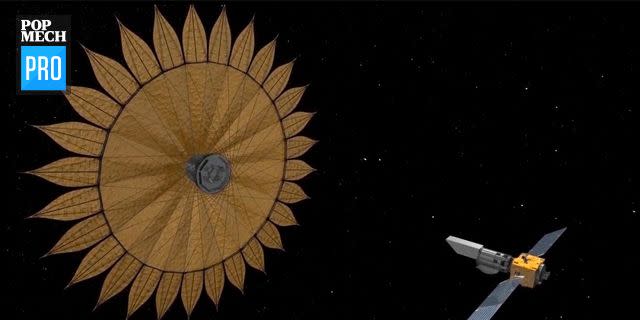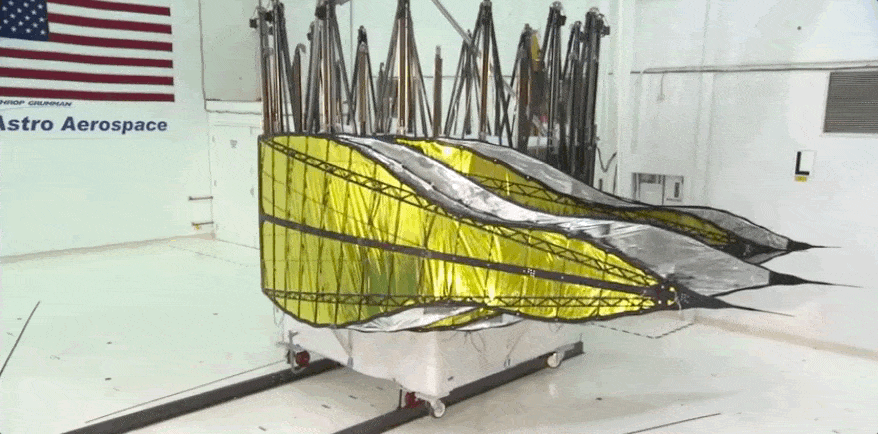NASA Wants to Block Out Distant Stars with the Craziest Flying Formation Ever

Studying deep space is hard. Not only is everything extremely far away, but when a scientist is trying to study one specific object in the vast void of the universe, other things can get in the way—things like stars, which are crucial to all known existence, but have a brightness that can be distracting.
That's why engineers at NASA's Jet Propulsion Laboratory (JPL) are working on what they call a "starshade," which could block the light from stars outside the solar system to further research.
It's all still hypothetical; no starshade has ever flown in space. The idea is ambitious, and would involve not one but two spacecraft: the space telescope and the starshade itself. The starshade would fly around 25,000 miles (40,000 kilometers) in front of it, a little longer than the distance of walking completely around the Earth.
"The distances we're talking about for the starshade technology are kind of hard to imagine," says JPL engineer Michael Bottom, who is working with fellow JPL engineer Thibault Flinois on a starshade, speaking in a press statement.
"If the starshade were scaled down to the size of a drink coaster, the telescope would be the size of a pencil eraser and they'd be separated by about 60 miles [100 kilometers]," Bottom says. "Now imagine those two objects are free-floating in space. They're both experiencing these little tugs and nudges from gravity and other forces, and over that distance we're trying to keep them both precisely aligned to within about 2 millimeters."

Once the distances are set, the starshade would go into action, "blooming" like a flower and spreading its artificial petals. Those petals would block out the light from a distant star and allow the space telescope to study nearby planets without distraction.
The idea of a starshade was first proposed in the halcyon days of the Space Race in the 1960s, when they were considered for studying exoplanets, or planets outside of the solar system. Hundreds of exoplanets have been discovered since then, often using natural star-blocking techniques. The transit method, for example, relies on when planetary orbits place exoplanets in between the telescope and their stars.
NASA is looking ahead with the starshade, trying to match any potential project with its Wide Field Infrared Survey Telescope (WFIRST), a telescope with a 2.4-meter-diameter primary mirror that the Agency hopes will launch in the mid-2020s. WFIRST will have its own starlight-blocking device embedded within, known as a coronagraph.
Although the technologies work separately at the moment, Bottom is working on algorithms that would allow WFIRST to detect when starshade is out of alignment all those miles away.
The key to a starshade's success would be formation flying between two crafts 25,000 miles away from each other. It's a lofty goal, which is part of the appeal.
"This to me is a fine example of how space technology becomes ever more extraordinary by building upon its prior successes," said Phil Willems, manager of NASA's Starshade Technology Development activity. "We use formation flying in space every time a capsule docks at the International Space Station. But Michael and Thibault have gone far beyond that, and shown a way to maintain formation over scales larger than Earth itself."
Source: JPL
You Might Also Like

